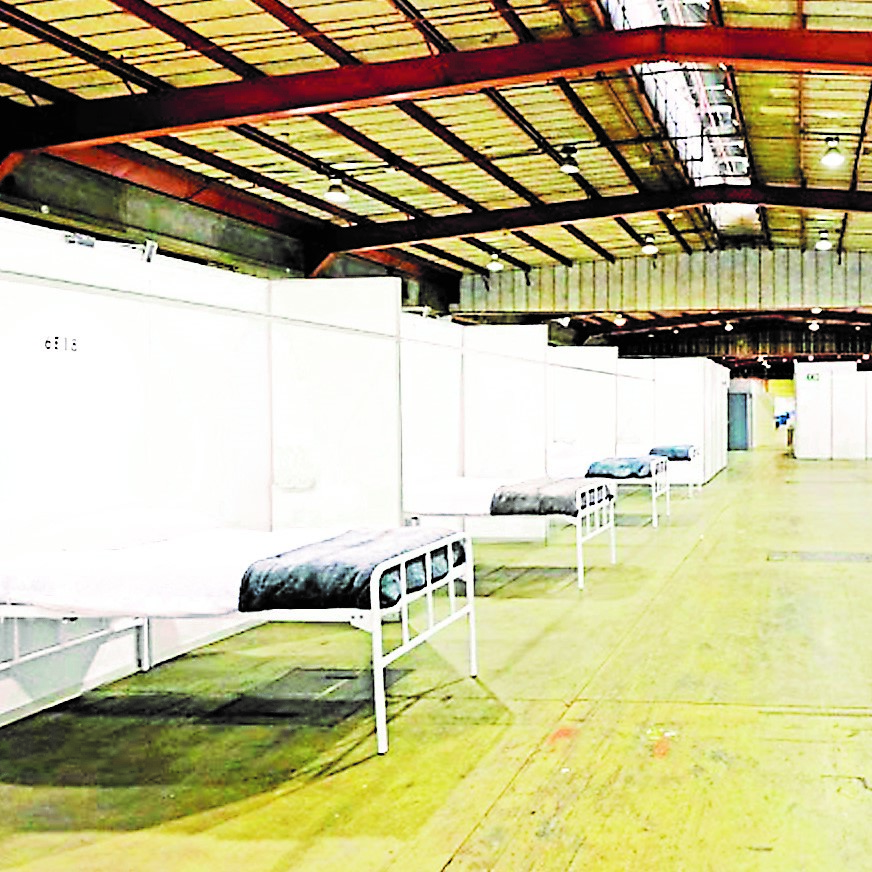click to dowload our latest edition
CLICK HERE TO SUBSCRIBE TO OUR NEWSLETTER


Published
4 years agoon
By
adminNICOLA MILTZ
Dr Richard Friedland, the chief executive of Netcare, says, “We are still in a dangerous position, especially in Gauteng and KwaZulu-Natal, but there are some rays of light.”
Although the private-healthcare sector is under strain, he’s hopeful that it has the capacity to survive the surge in COVID-19 patients at hospitals, and is adequately equipped to cope as the virus continues to wreak havoc across the country.
South Africa has the fourth highest number of new confirmed cases in the world behind the United States, India, and Brazil, and is by far Africa’s hardest-hit country. This is astonishing, say experts, given the size of our population. They acknowledge that the statistics are stark.
By 22 July, the number of confirmed cases was 381 798. There were 5 368 deaths recorded, and 208 144 recoveries. According to current projections, the virus peak will occur at different times in each province between July and September.
“It’s a blessing that South Africa came into this pandemic late,” says Friedland. “Certainly, from a treatment point of view, we have been able to benefit from the experience of the rest of the world and our treatment regimes are getting better as a result. We now know not every patient needs a ventilator; not every patient needs an intensive care unit (ICU) bed; and many can be treated at home with the help of their general practitioner.”
Added to this the introduction of the use of oxygen, anti-coagulants, and steroids at the appropriate time has “changed the outlook for COVID-19”, he says.
“As a result, hospital admissions have decreased; patients’ length of stay has decreased; and mortality has decreased dramatically.”
A lot of the initial planning for ICU beds and the number of ventilators needed was based on initial projections from countries like Italy, China, France, Spain, and the United Kingdom, and things have changed.
“We believe there is sufficient capacity based on our remodelling of what we are seeing in our hospitals. The treatment modalities are improving, and we are getting on top of this virus in terms of understanding it better.
“That’s not to say patients aren’t still dying, but from a hospital perspective, we are admitting less patients,” he said.
Friedland said there was enough capacity across the private sector, but it still wasn’t known to what extent the government would require private beds.
Public hospitals are at breaking point, say medical insiders. It has been reported that they are likely to run out of beds before the end of the month. The national health department has negotiated service-level agreements (SLAs) with the private-healthcare sector for additional beds, but the details have yet to be finalised. Most provinces are reportedly under heavy pressure to finalise their respective SLAs with private hospitals and health practitioners.
Health Minister Dr Zweli Mkhize is aware that bed capacity is expected to be breached in most provinces, having warned parliament about it two weeks ago.
The government has been scrambling this week to ready field hospitals, with several across the country finally accepting patients.
Jack Bloom, the Democratic Alliance’s Gauteng shadow health MEC, said more field hospitals were promised. “As public hospitals in Gauteng struggle to cope, only one field hospital is operating,” he said.
“Another four sites have been identified for field hospitals, but aren’t ready to take patients even as COVID-19 cases surge in the province.”
Life Healthcare Group said on Tuesday, that for now, it had available bed capacity.
Dr Charl van Loggerenberg, Life Healthcare’s general manager for emergency medicine, says that contrary to rumour on social media, no Life Healthcare hospitals are turning patients away. This group of hospitals is ready and able to admit COVID-19 and non-COVID-19 related patients.
He says the capacity of any hospital to manage COVID-19 infections is based on a number of factors, not only patient and bed numbers. “All hospitals need to balance available staffing – nurses, specialists, and allied healthcare professionals – with the need to accommodate and treat patients who are admitted for various health-related conditions.
“The bed-capacity situation across all our hospitals is fluid, and is being reassessed frequently. Hospital management teams remain in constant contact with one another, their doctors, and other healthcare professionals, and private hospital groups as well as provincial health authorities to ensure that additional beds are available should this be required,” he says.
“The decision to admit patients who are seriously ill with COVID-19-related conditions is based on the capacity in ICU and high-care wards, taking into account the availability of specialists, ICU nurses, ventilators, and high flow oxygen. All our hospital management meetings include representation from the Doctor COVID Committee to manage admissions of seriously ill patients and not turn anyone away.”
Dr Stefan Smuts of Mediclinic says that COVID-19 is known to place strain on critical care and high-care resources, and since the outset of the pandemic, focus has been placed on these key care delivery capabilities.
“Given that there are a number of factors involved in increasing ICU/high-care capacity, which includes potential infrastructural changes and accessing ventilators amongst other things, effort at this stage has been placed into re-purposing existing care spaces to better facilitate COVID-19 treatment through the different phases of the pandemic,” he says.
In anticipation of the pressure on the availability of qualified healthcare workers, Mediclinic sought early on to train and upskill staff from other areas of the hospital to ensure that it had more staff capable of working in ICU wards at its hospitals.
